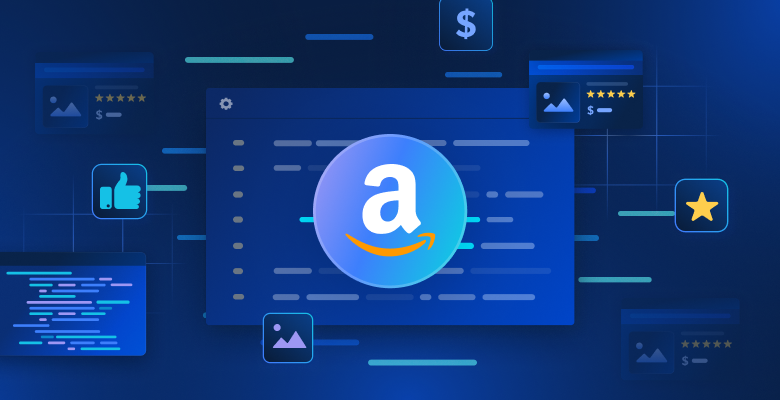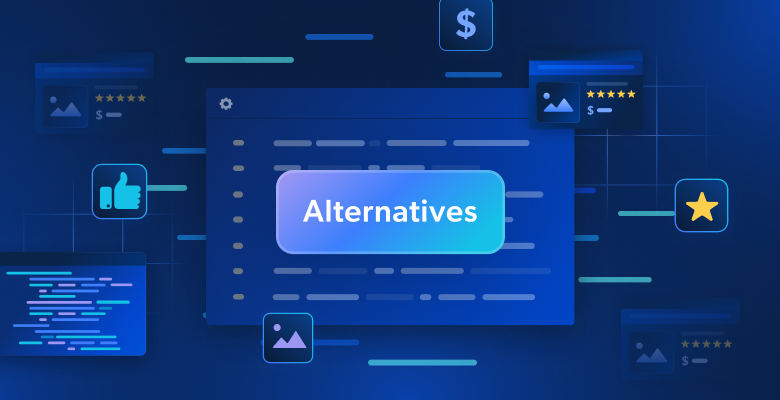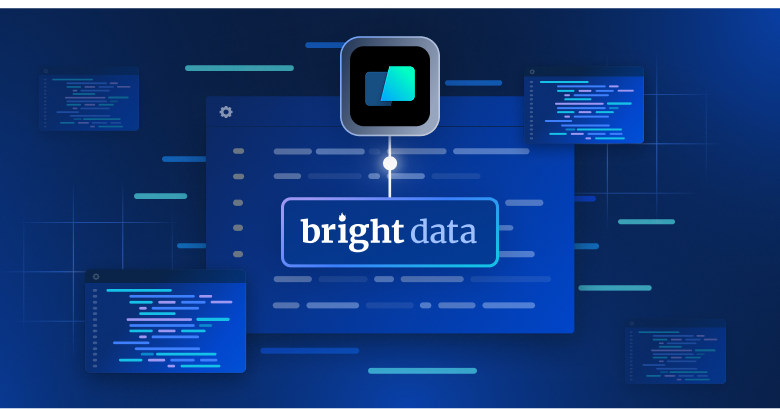Data is one of the most valuable assets today, and protecting it has become a top priority for companies. As a result, websites are implementing advanced anti-scraping measures to safeguard their data. If you’re looking to gather data effectively, understanding these anti-scraping techniques is important. This article will cover the popular anti-scraping techniques and discuss ways to work around them!
What is Anti-scraping?
Anti-scraping refers to a set of techniques and tools implemented by websites to prevent unauthorized data extraction. Websites employ various methods to detect scraping activities, such as monitoring incoming traffic for unusual patterns, like excessive requests from a single IP address.
CAPTCHA challenges are another common method used to distinguish between human users and automated bots. These are just a few of the many common anti-scraping techniques websites use today. Let’s discuss more in the next section!
The 7 Most Popular Anti-Scraping Techniques
Let’s explore the seven most popular anti-scraping techniques and strategies to overcome them.
1. IP Address Blacklisting
IP address blacklisting is a common method used by websites to limit the number of requests a single IP address can make within a specific timeframe. This technique is very effective in identifying and blocking scrapers that send too many requests.
Firstly, it’s recommended not to use your real IP address for scraping to bypass the IP ban. The best way is to use IP rotation through premium rotating proxies. This involves frequently changing the IP address to distribute requests across multiple IPs, reducing the chance of detection and blocking.
If you need reliable, fast, and stable proxies for web scraping, Bright Data offers various options tailored for different use cases. With millions of residential and datacenter proxy IPs, Bright Data ensures reliable and efficient proxy solutions.
2. User Agent and Other HTTP Header Filtering
User-agent filtering is another common anti-scraping technique. Websites analyze the “User-Agent” string in HTTP headers to differentiate and block non-human traffic. Scrapers often rely on default User-Agent strings that are easily detectable by anti-scraping tools.
Similarly, anti-scraping systems may block requests that don’t include a Referrer header, which contains the URL of the page that initiated the request.
Other headers like Accept-Language, Accept-Encoding, and Connection are typically sent by web browsers but rarely included by scrapers. Scrapers often neglect these headers because they don’t directly affect content retrieval.
To bypass these checks, you can rotate through a list of User-Agent strings mimicking popular browsers and devices and include additional headers like those discussed above.
However, websites can counter this by cross-referencing User-Agent data with other behavioral indicators like request patterns and IP address reputation. This technique requires constant updates to the User-Agent string list to stay effective, which can be time-consuming and challenging to maintain.
The ultimate solution to avoid these complications is to use the Bright Data Web Scraper API. This next-generation scraping API effortlessly bypasses anti-bot technologies with features like automatic IP rotation, user-agent rotation, and residential proxies. Making successful automated requests has never been easier!
3. JavaScript Challenges
Websites often use JavaScript challenges to prevent automated scraping. These challenges may include CAPTCHAs, dynamic content loading, and other techniques that require JavaScript execution.

To address these challenges, you can use headless browsers such as Playwright or Selenium, which run JavaScript and interact with web pages like a human user. However, advanced bot protection systems like Cloudflare and Akamai present some of the most difficult JavaScript challenges in the market. Overcoming these challenges often requires spending significant time tinkering with tools instead of focusing on writing the scraper. Nevertheless, it is possible to bypass them using Bright Data Scraping Browser.
The Scraping Browser comes with a built-in feature for unlocking websites, which takes care of handling blocking mechanisms automatically. It manages all website unlocking operations behind the scenes, including CAPTCHA solving, automatic retries, and selecting appropriate headers, cookies, and JavaScript rendering. Additionally, the Scraping Browser seamlessly integrates with Puppeteer, Selenium, and Playwright, providing a complete headless browser experience.
4. CAPTCHA Challenges
CAPTCHAs are a popular anti-bot protection system that requires users to complete a challenge to verify their human identity.

These challenges might involve identifying objects in images, solving puzzles, or typing distorted text. CAPTCHAs are effective because they are designed to be difficult for automated systems to solve.
Many CDN (Content Delivery Network) services, like Cloudflare and Akamai, now incorporate CAPTCHAs into their anti-bot protection offerings. This helps websites to automatically present CAPTCHAs to suspicious users, particularly when unusual traffic patterns are detected.
Thankfully, CAPTCHA solvers were developed to address this issue. There are many CAPTCHA solvers available on the market, which we have discussed in detail in our article, Best 9 CAPTCHA Solvers for Web Scraping. You can review them based on factors like speed, accuracy, price, the types of CAPTCHAs they solve, and API integration to find which one best suits your needs.
Based on my experience, the Bright Data Web Unlocker stands out in terms of success rate, speed, and ability to solve various CAPTCHA types. For more information, you can check out the detailed guide on Bypassing CAPTCHAs Using Web Unlocker.
5. Honeypot Traps
Honeypots are a simple yet effective way to identify and block unsophisticated bots that fail to differentiate between visible and hidden content. These traps often include hidden links or forms that are invisible to human users but detectable by bots. When a scraper interacts with a honeypot, it triggers the anti-scraping system to block the scraper.
To avoid honeypots, scrapers must carefully analyze the HTML structure of web pages and avoid interacting with elements that are not visible to human users, such as those with properties like "display: none" or "visibility: hidden". Another strategy is to rotate proxies so that if one of the proxy server IP addresses is caught in a honeypot and banned, you can still connect through other proxies.
6. Behavior Analysis
Behavioral analysis involves monitoring user actions over time to detect patterns that indicate automated scraping. Bots exhibit predictable and repetitive behaviors, such as making requests at regular intervals, following unusual navigation paths, or accessing pages in a specific order. Websites also analyze factors like session length, mouse movements, and interaction timing to identify non-human activity.
Advanced anti-bot systems utilize machine learning to adjust to new scraping techniques. By training models on extensive datasets of user interactions, these systems can more accurately differentiate between human and bot behaviors. This adaptive approach allows machine learning algorithms to evolve in response to evolving bot strategies.
It can be difficult to bypass these systems, and you’ll probably need advanced anti-scraping services to keep up. Web Unlocker is an advanced solution based on AI and machine learning. It is designed to tackle and circumvent these blockades. It uses machine learning to determine the best methods for bypassing site defenses and employs trained algorithms to apply customized fingerprint configurations.
7. Browser Fingerprinting
Browser fingerprinting is a technique used by websites to collect information about your browser, such as screen resolution, operating system, language, time zone, installed extensions, and fonts. By combining these details, websites can create a unique identifier for your device, which can be used to track and block scrapers. To avoid browser fingerprinting, you can randomize these characteristics to make it harder for websites to create a consistent fingerprint. For this, you can change your IP address frequently, use different request headers (including various User-Agents), and configure your headless browser to use different screen sizes, resolutions, and fonts.
While these methods may work in some cases, they come with risks and limitations. To save time and effort and ensure smooth scraping operations, consider using tools like Bright Data Web Unlocker or Scraping Browser, which are specifically designed to efficiently handle these challenges.
Conclusion
This article has covered everything you need to know about popular anti-scraping techniques. By understanding these techniques and implementing advanced evasion tactics, you can effectively extract data from websites.
For further guidance, we have a detailed guide on web scraping without getting blocked, where we discuss various solutions to overcome website restrictions.
Alternatively, you can streamline the process by using the Bright Data Scraping Browser or Web Unlocker to access data from any website, regardless of their restrictions. Start using Bright Data’s products today with a free trial, sign up below!







